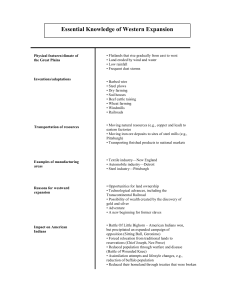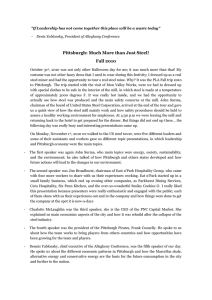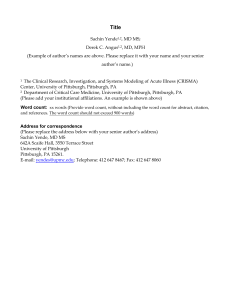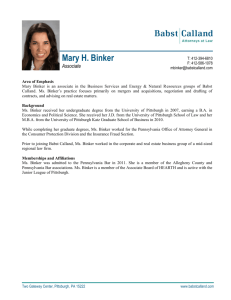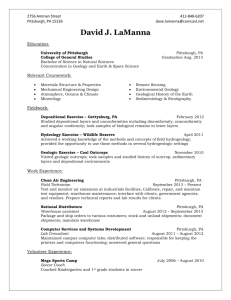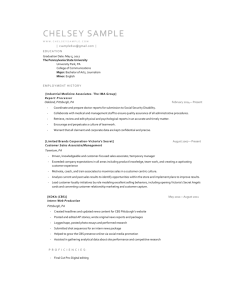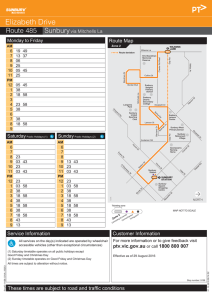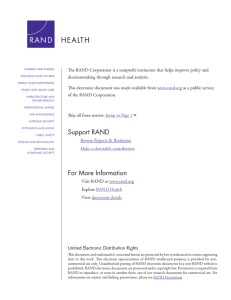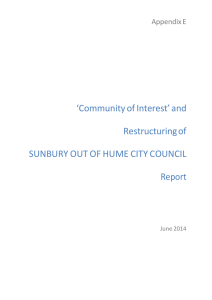INDUSTRIAL PENNSYLVANIA
advertisement
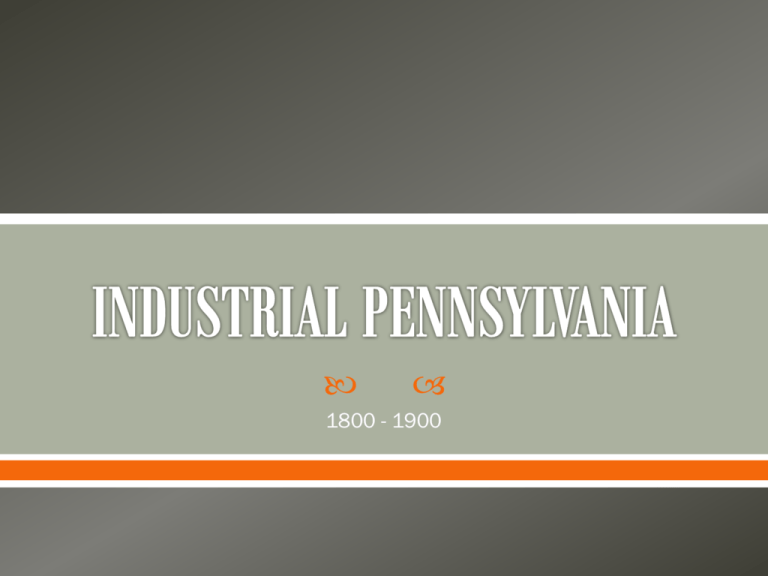
1800 - 1900 1700s – Germans, Welsh, Scotch-Irish, & English 1840s – Irish-Catholics (Philadelphia) Anti-Irish Riot of 1844 – persecuted for not being born in the United States. Early 1900s – Italians, Poles, Russians, Czechs They couldn’t speak English & were taken advantage of with low wages and poor working conditions. William Kelly – awarded the U.S. patent for the blast furnace, a cheaper way of making steel. (Pittsburgh) By the 1870s, Pittsburgh had 18 steel mills & produced nearly 2/3 of all U.S. steel. Andrew Carnegie – helped to change the steel industry & eventually became one of the richest men in the world. Charles Martin Hall – discovered a cheap way to produce aluminum by running electric current through molten aluminum; after it cooled, solid pieces appeared. He joined with two other scientists to find a way to produce large quantities. The company became known as the Aluminum Company of America. (ALCOA) Oil and grease were needed for automobiles and airplanes. Refining – changes crude oil from the ground into gasoline and motor oil. Gulf Oil Company (Pittsburgh)– became the largest refiner of oil products in the world and opened the first service station for automobiles. (William Mellon) Thomas Edison – discovered how to use electricity to light a glass bulb. 1st Plant – Sunbury, PA 1st Building Lit – Sunbury City Hotel George Westinghouse – used an alternating current(AC), which carried up to 4 miles and lit as many as 400 lamps. Invented the 1st electric motor Westinghouse Electrical Company - Pittsburgh Factory and mine owners made changes to increase profits. -Instituted (10-12) hour work days -Instituted (6-7) day work weeks -Lowered wages to pay for machinery -Unsafe working conditions with no compensation Strike – refusal to work until demands are met. Knights of Labor – union founded in Philadelphia as a secret organization. It grew under the leadership of Terrance Powderly. He offered memberships to skilled (trade) & unskilled (mine & mill) workers as well as all races & genders. The union was damaged in the 1880s because of participation in many strikes, even though the leadership argued against them. The union eventually fell apart after Southern leaders dropped membership because of women & blacks. Molly Maguires – secret group of Irish miners. -They murdered their mine superintendents and managers because of harsh treatment. Great Railroad Strike of 1877 – blocked freight trains of the Pennsylvania Railroad. (Pittsburgh) -Looted, refused to work, & set part of the city on fire -National Guard was called in; fought for 3 days Homestead Steel Strike (1892) – plant manager Henry Clay Frick cuts wages and, when not accepted, hires scabs, or strikebreakers, as replacements. Frick had a 12ft. high fence topped with barbed wire built around the plant & added peepholes for rifles. He hired agents for protection and had them travel by barge down the Monongahela River. As they approached, they were attacked by stones, bricks, and bullets. It turned into a full-scale battle; Frick was shot in his office, but only wounded. The public blamed the union for the violence & it broke up. Lattimer Massacre (1897)– 400 members of the United Mine Workers protest against the Lehigh & Wilkes-Barre Coal Company. As they marched toward town, they were met by the sheriff and 150 other men. After some pushing and shoving, the police fired into the crowd. (19 miners dead; 39 injured)
